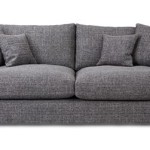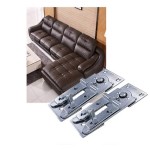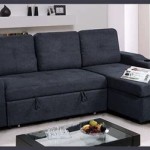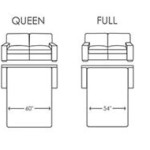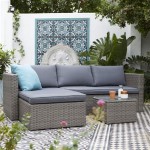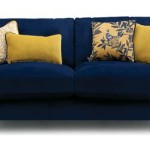Understanding Sofa Sleeper Sheets: A Comprehensive Guide
Sofa sleepers, also known as sleeper sofas or convertible sofas, offer a versatile solution for accommodating overnight guests without the commitment of a dedicated guest room. These multi-functional pieces of furniture, however, often present unique challenges when it comes to bedding. Standard bed sheets rarely fit appropriately on the typically thinner and often uniquely sized mattresses found within sofa sleepers. Selecting the correct sofa sleeper sheets is crucial for ensuring a comfortable and restful night's sleep for anyone utilizing this convertible bed.
The market offers a broad range of sheet options designed specifically for sofa sleepers, each varying in material, size, thread count, and construction. Understanding these differences is essential for making an informed purchase. This article will delve into the key factors to consider when selecting sofa sleeper sheets, exploring the various materials available, outlining common size variations, and providing guidance on ensuring a proper fit. It will also address the importance of thread count and construction, and offer insights into maintaining the quality and longevity of these specialized bedding items.
Key Point 1: Material Considerations for Sofa Sleeper Sheets
The material of sofa sleeper sheets directly impacts comfort, breathability, durability, and overall sleep experience. Several common materials are used in the manufacturing of these sheets, each possessing distinct characteristics:
Cotton: Cotton remains a popular choice for bedding due to its breathability, softness, and affordability. Different types of cotton, such as Egyptian cotton, Pima cotton, and Upland cotton, offer varying levels of quality and durability. Egyptian and Pima cotton are known for their long fibers, resulting in a smoother and more durable fabric. Upland cotton, while more affordable, may be less soft and prone to pilling. Cotton sheets are generally easy to care for and can withstand regular washing and drying.
Microfiber: Microfiber sheets are made from tightly woven synthetic fibers, typically polyester or nylon. They are known for their softness, wrinkle resistance, and affordability. Microfiber sheets are also hypoallergenic and resistant to dust mites, making them a good option for individuals with allergies. However, microfiber may not be as breathable as cotton, potentially leading to a warmer sleep experience.
Linen: Linen is a natural fiber derived from the flax plant. It is known for its durability, breathability, and moisture-wicking properties. Linen sheets are often more expensive than cotton or microfiber, but they tend to soften with each wash and can last for many years. Linen also has a naturally textured feel, which some individuals find appealing. The breathability and moisture-wicking qualities of linen make it a suitable choice for warmer climates or individuals who tend to sleep hot.
Bamboo: Bamboo sheets are made from bamboo fibers and offer a smooth, silky texture. They are known for their breathability, moisture-wicking properties, and hypoallergenic qualities. Bamboo sheets are also considered to be environmentally friendly, as bamboo is a rapidly renewable resource. However, the manufacturing process for bamboo sheets can vary, impacting the final product's quality and environmental impact. Ensure that the bamboo sheets are processed using sustainable methods.
When selecting a material for sofa sleeper sheets, consider personal preferences regarding softness, breathability, budget, and any allergy concerns. Evaluate the climate and typical sleeping conditions to determine the most suitable material for optimal comfort.
Key Point 2: Understanding Sofa Sleeper Mattress Sizes and Sheet Fit
Sofa sleeper mattresses come in a variety of sizes, deviating significantly from standard bed dimensions. Ensuring a proper fit is critical for preventing the sheets from slipping off or bunching up, which can disrupt sleep and damage the sheets themselves. Common sofa sleeper mattress sizes include:
Twin: A twin-size sofa sleeper mattress typically measures around 39 inches wide and 75 inches long. This is a common size for smaller sofa sleepers designed for single occupancy.
Full: A full-size sofa sleeper mattress is approximately 54 inches wide and 75 inches long. This provides more sleeping space than a twin and can accommodate two smaller individuals or one individual comfortably.
Queen: A queen-size sofa sleeper mattress measures around 60 inches wide and 80 inches long. This is a popular choice for couples or individuals who prefer more sleeping space.
King: A king-size sofa sleeper mattress is approximately 76 inches wide and 80 inches long. This is the largest size available and offers ample space for two individuals. King size sofa sleepers are less common due to their size and cost.
In addition to the length and width, the mattress depth, or thickness, is a crucial factor. Sofa sleeper mattresses are typically much thinner than standard mattresses, often ranging from 4 to 6 inches in thickness. Standard sheets designed for thicker mattresses will have excess fabric that can bunch up and create discomfort. Look for sheets specifically designed for shallow mattresses or fitted sheets with elastic all the way around the perimeter for a snug fit. Some manufacturers offer fitted sheets with adjustable elastic or straps to ensure a secure fit on various mattress depths.
Before purchasing sofa sleeper sheets, accurately measure the length, width, and depth of the mattress. Compare these measurements to the sheet set's dimensions to ensure a proper fit. A well-fitting sheet will stay securely in place throughout the night and contribute to a more comfortable sleep experience.
Key Point 3: Thread Count, Construction, and Maintenance
Thread count and construction play significant roles in the overall quality, durability, and feel of sofa sleeper sheets. While thread count has been traditionally used as a measure of quality, it is not the only factor to consider. Construction techniques, such as weaving style and finishing processes, also contribute to the sheet's performance.
Thread Count: Thread count refers to the number of horizontal and vertical threads per square inch of fabric. Generally, a higher thread count indicates a denser and potentially smoother fabric. However, thread counts exceeding 600 may not necessarily translate to increased quality and can sometimes be misleading. Focus on the quality of the fibers used rather than solely relying on thread count numbers. Sheets made from long-staple cotton, such as Egyptian or Pima, will generally feel softer and more durable than sheets made from short-staple cotton, regardless of thread count.
Weaving Style: The weaving style impacts the fabric's texture and performance. Common weaving styles include:
Percale: Percale is a plain weave that results in a crisp, cool, and durable fabric. Percale sheets are known for their matte finish and breathability.
Sateen: Sateen is a weave that creates a smooth, silky texture. Sateen sheets are often more prone to wrinkling than percale sheets but offer a luxurious feel.
Twill: Twill is a weave that produces a diagonal rib pattern on the fabric. Twill sheets are known for their durability and wrinkle resistance.
Consider the desired texture and feel when choosing a weaving style. Percale is a good option for those who prefer a crisp and cool feel, while sateen is suitable for those who prefer a smooth and silky texture.
Maintenance: Proper care and maintenance are essential for extending the lifespan of sofa sleeper sheets. Always follow the manufacturer's instructions for washing and drying. Generally, it is recommended to wash sheets in cold or lukewarm water and dry them on a low setting. Avoid using harsh detergents or bleach, as these can damage the fibers and cause fading. Ironing sheets is optional but can help to maintain a crisp appearance. Store sheets in a cool, dry place to prevent mildew and dust accumulation.
By considering thread count, weaving style, and proper maintenance, one can ensure the longevity and optimal performance of sofa sleeper sheets, contributing to a more comfortable and restful sleep experience.
The selection of sofa sleeper sheets involves careful consideration of various factors, including material, size, thread count, and construction. Each of these elements contributes to the overall comfort, durability, and suitability of the sheets for a specific sofa sleeper and individual's preferences. By understanding these key aspects, a more informed purchase decision can be made, leading to an enhanced sleep experience for users of sofa sleepers.

King Sofa Bed Sheets 76 X80 100 Cotton 400 Thread Count Linens Etc

Sofa Bed Pull Out Fitted Sheet Various Sizes Colours

Queen Sofa Bed Sheets 60 X74 100 Cotton 300 Thread Count Linens Etc

Mattress Topper Small Double Sofa Pull Out Bed Single Bunk Size Sheets Available

Choosing The Right Sofa Bed Sheets Expert Recommendations Spaze Furniture Us

Customize And Personalize Sofa By Savvy Size Bed Sleepersinseattle Com

Sofa Bed Sheets Made In The Usa Cozytown Linens

Sleeper Sofa Sheets Queen Size 62 X 74 18 Inch Deep Solid Grey 1800 Series Double Brushed Microfiber Super Soft Wrinkle Fade Resitant Bed By The Great American Com

The 200tc 50 Sofa Bed Sheets Are Designed To Properly Fit Your Sleeper With Elastic Around Entire Ed Soft

Fuli 100 Cotton Fitted Sheets Japanese Futon Mattress Cover Sofa Bed Sheet Made In Japan Dark Gray Twin Xl Com

